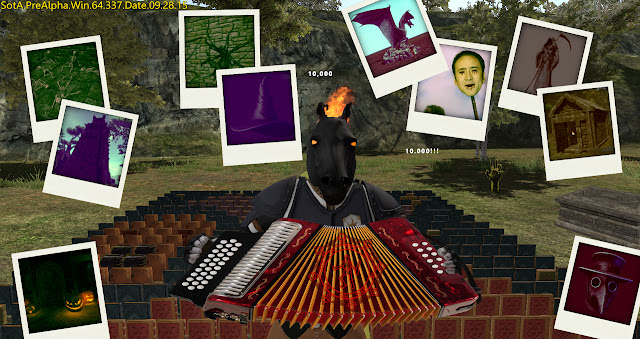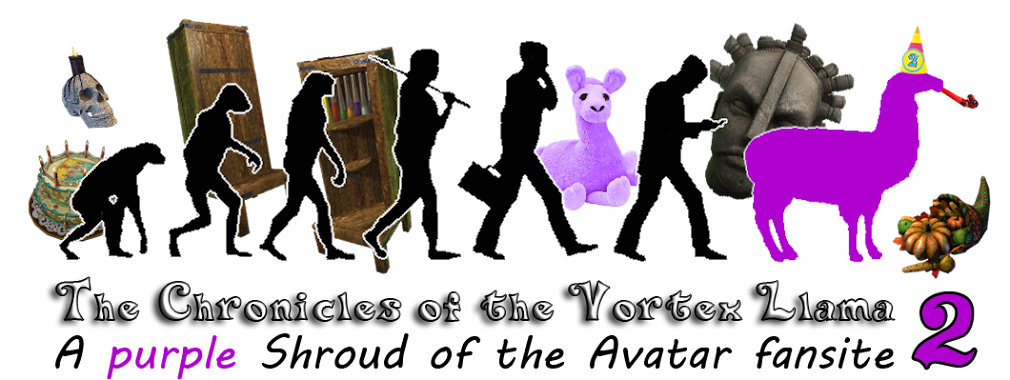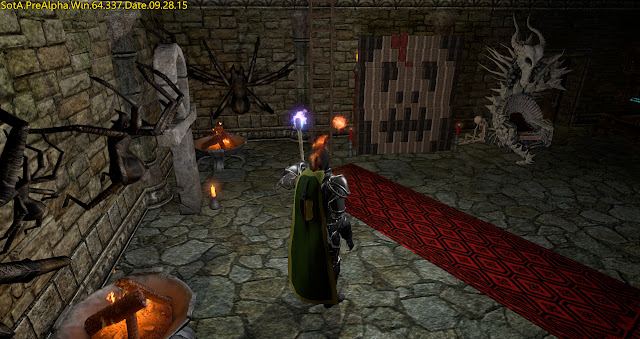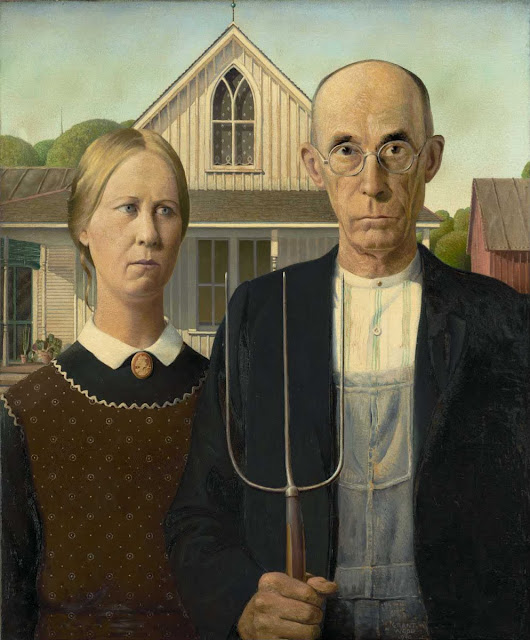Etiquetas
(Loading...)
Saturday, October 31, 2015
A tour for the memory, bye bye gallery!
In the last release I spent literally hundreds of hours preparing The Gallery of Wonderful Horrors. Yes, I know that I already wrote enough about it, and is already gone, but I want to share this film with you, since I wanted to record a something to keep this place in memory, but I had no opportunity to do it.
It is a creation of Lazarus of NBNN News, together with the guides of the Halloween deco contest, Selene and Edward. The museum was not exactly a Halloween decorated home, but since the Llama Art is superb I was invited to participate and the result was a podium.
I added the Moonlight Sonata of Beethoven for those who did not have the opportunity to hear me playing it in the piano in the official grand opening. Ey! What about a pipe organ to improve the creepy music in our lairs? =)
Wednesday, October 21, 2015
Looking to the future
It has been a long time since my last time writing about the state of Shroud of the Avatar. I should say that the last official update was the best ever: they dedicated some space to the glorious Gallery of Wonderful Horrors! Yaaay!
Now I want to share few thoughts about some of the new characteristics added lately:
 |
| Dragons? Bah! Tales! I just need to live in peace and work hard with my pickaxe... |
Thursday, October 15, 2015
Recommended by Sir Garriott de Cayeux
Still not sure if you want to go to my gallery? To lazy because it would take some minutes? Sasha and even Richard Garriott (purple name big guy) recommend you to do it! And it is free!
 |
| And this time is not a photoshop! |
This remind me when someone in Portalarium drank too much tequila with vodka and featured this site:
Tuesday, October 13, 2015
Special edition: Gallery of Wonderful Horrors
Tonight we have a very unique document, about the grand opening of my dark art gallery. The event was very funny and we spent one hour and a half, instead of 30 minutes. But for me the time ran as fast as a speedy trans-dimensional vortex purple and four legged llama!
If you want to visit the place by yourself and wish to be surprised don't read this entry until you already finished the tour! If you are lucky enough the public chest in the entrance still could have some of the three guides that nobody grabbed. And remember that the R23 will burn all!
If you want to visit the place by yourself and wish to be surprised don't read this entry until you already finished the tour! If you are lucky enough the public chest in the entrance still could have some of the three guides that nobody grabbed. And remember that the R23 will burn all!
(*Don´t forget that you can click to enlarge*)
 |
| Sincere thanks to everyone! We even had a royal visitor. |
*** Spoilert Alert ***
Monday, October 12, 2015
Pole crazyness in Novia
You humans are too much obsessed with those poles...
I was kidding. I know that you are in the medieval-steampunk age, I am not that dumb:
I was kidding. I know that you are in the medieval-steampunk age, I am not that dumb:
Saturday, October 10, 2015
Gallery of Wonderful Horrors Grand Opening!
I am glad to invite you to the...
Sir Eriador Moonstone, hero of the My Disastrous Adventures comic series, will drive this one time in life event. The opening will have this uniques features:
Sir Eriador Moonstone, hero of the My Disastrous Adventures comic series, will drive this one time in life event. The opening will have this uniques features:
Thursday, October 8, 2015
Cute pets everywhere!
Hoof of the Avatar 2: Obsidian Halloween
Arrangement in Grey and Black No.1, best known under its colloquial name Whistler's Mother (aka Mr. Bean painting), is a oil on canvas created by the American-born painter James McNeill Whistler in 1871. Anna McNeill Whistler posed for the painting while living in London with her son at Chelsea.
It is exhibited in and held by the Musée d'Orsay in Paris, having been bought by the French state in 1891. The image has been repeatedly appropriated for commercial advertisements and parodies and is one of the most famous works by an American artist outside the United States.
It is exhibited in and held by the Musée d'Orsay in Paris, having been bought by the French state in 1891. The image has been repeatedly appropriated for commercial advertisements and parodies and is one of the most famous works by an American artist outside the United States.
It has been variously described as an American icon and a Victorian Mona Lisa. For example, in 1934 the U.S. Post office issued a stamp engraved with a stylized image of Whistler's Mother, accompanied by the slogan "In Memory and In Honor of the Mothers of America".
This wave of Hoof of the Avatar is done. Bloody hugs with hooves and prepare yourselves for Halloween!
Highly improved Vortex Shroud of the Avatar version
Mr. Skullface
Wednesday, October 7, 2015
Hoof of the Avatar 2: A Glitched Release
The Persistence of Memory (Spanish: La Persistencia de la Memoria) is a 1931 painting by surrealist artist Salvador Dalí, and is one of his most recognizable works. Some interpretations suggest that Dalí was incorporating an understanding of the world introduced by Albert Einstein's Theory of Relativity.
It is possible to recognize a human figure in the middle of the composition, in the strange "monster" that Dalí used in several contemporary pieces to represent himself – the abstract form becoming something of a self-portrait, reappearing frequently in his work. The clocks may symbolize the passing of time as one experiences it in sleep or the persistence of time in the eyes of the dreamer. Dalí often used ants in his paintings as a symbol of decay.
Since 1934 the painting has been in the collection of the Museum of Modern Art (MoMA) in New York City, which received it from an anonymous donor. It is widely recognized and frequently referenced in popular culture, and sometimes referred to by more descriptive (though incorrect) titles, such as "The Soft Watches" or "The Melting Watches".
And tomorrow we will have the last art of this wave!
It is possible to recognize a human figure in the middle of the composition, in the strange "monster" that Dalí used in several contemporary pieces to represent himself – the abstract form becoming something of a self-portrait, reappearing frequently in his work. The clocks may symbolize the passing of time as one experiences it in sleep or the persistence of time in the eyes of the dreamer. Dalí often used ants in his paintings as a symbol of decay.
Since 1934 the painting has been in the collection of the Museum of Modern Art (MoMA) in New York City, which received it from an anonymous donor. It is widely recognized and frequently referenced in popular culture, and sometimes referred to by more descriptive (though incorrect) titles, such as "The Soft Watches" or "The Melting Watches".
And tomorrow we will have the last art of this wave!
Highly improved Vortex Shroud of the Avatar version
Tuesday, October 6, 2015
The Dark Chamber
Finally, since I have no more floor space and reached the ligth limit, my last try with the books in this release, using the H&B technique. The Dark Chamber, with the effigies of some classical monsters.
I made a complete semi-circle in the second floor of the basement, leaving brown holes to create some monster tongues and volumes like wedges to represent the gills of the dragon. I played also with the drawing in the book covers, in special with the eyes. Can you see yourself inside of the dragon eye?
I made a complete semi-circle in the second floor of the basement, leaving brown holes to create some monster tongues and volumes like wedges to represent the gills of the dragon. I played also with the drawing in the book covers, in special with the eyes. Can you see yourself inside of the dragon eye?
Here is the result:
 |
| * Click to enlarge * |
If you want to visit all this superb llama creations here is a map to help you:
Hoof of the Avatar 2: Decay Day
The Scream (Norwegian: Skrik) is the popular name given to each of four versions of a composition, created as both paintings and pastels, by the Expressionist artist Edvard Munch between 1893 and 1910. Der Schrei der Natur (The Scream of Nature) is the title Munch gave to these works, all of which show a figure with an agonized expression against a landscape with a tumultuous orange sky.
Among theories advanced to account for the reddish sky in the background is the artist's memory of the effects of the powerful volcanic eruption of Krakatoa, which deeply tinted sunset skies red. This explanation has been disputed by scholars. The imagery of The Scream has been compared to that which an individual suffering from depersonalization disorder experiences, a feeling of distortion of the environment and one's self, and also facial pain in the form of Trigeminal neuralgia.
Alternatively, it has been suggested that the proximity of both a slaughterhouse and a lunatic asylum to the site depicted in the painting may have offered some inspiration. Robert Rosenblum suggested that the strange, sexless creature in the foreground of the painting was inspired by a Peruvian mummy.
Arthur Lubow has described The Scream as "an icon of modern art, a Mona Lisa for our time".
Among theories advanced to account for the reddish sky in the background is the artist's memory of the effects of the powerful volcanic eruption of Krakatoa, which deeply tinted sunset skies red. This explanation has been disputed by scholars. The imagery of The Scream has been compared to that which an individual suffering from depersonalization disorder experiences, a feeling of distortion of the environment and one's self, and also facial pain in the form of Trigeminal neuralgia.
Alternatively, it has been suggested that the proximity of both a slaughterhouse and a lunatic asylum to the site depicted in the painting may have offered some inspiration. Robert Rosenblum suggested that the strange, sexless creature in the foreground of the painting was inspired by a Peruvian mummy.
Arthur Lubow has described The Scream as "an icon of modern art, a Mona Lisa for our time".
Highly improved Vortex Shroud of the Avatar version
Monday, October 5, 2015
Wall mural: A Guest From Another World
This is my second try to develop new techniques to make paintings and deco with books. I call this one "Hoofs and Books" because... it rhymes. My village lot was full with my previous tapestry, so I should start to use the basement and to develop a different way to work there.
This time I tried to create a wall mural. I lost the (so-so) 3D effect that horizontal books do, but the characteristics to live down in a hole are better for a mural: the horizontal view/space is smaller and the light there is darker, so it needs something vertical with a much clearer image. The best news is that in a basement the item limit is five time the outside lot. In a village lot, for example, it is 2.000 (400x5).
The big problem now is that we only can stack five books, so I tried a system using cabinets in the back to make a taller pile. The result of the experiment is this:
 |
| A Lord guest came from beyond to visit Novia in Halloween. Can you guess Who is? |
I prepared it in four dimensional and mortal but happy steps:
Hoof of the Avatar 2: The Girl and the Ancient Ring
Girl
with a Pearl Earring (Dutch: Meisje met de parel)[1][2] is an oil
painting by 17th-century Dutch painter Johannes Vermeer. The painting is
a tronie that depicts a European girl wearing an exotic dress, an
oriental turban, and a large pearl earring. It has been in the
collection of the Mauritshuis in The Hague since 1902.
Vermeer worked slowly and with great care, and frequently used very expensive pigments. He is particularly renowned for his masterly treatment and use of light in his work. Vermeer's work was largely overlooked by art historians for two centuries after his death.
Vermeer worked slowly and with great care, and frequently used very expensive pigments. He is particularly renowned for his masterly treatment and use of light in his work. Vermeer's work was largely overlooked by art historians for two centuries after his death.
Tracy Chevalier's novel Girl with a Pearl Earring (1999) and the film of the same name (2003) present a fictional account of Vermeer's creation of the famous painting and his relationship with the equally fictional model. The film was nominated for Oscars in cinematography, art direction, and costume design.
Highly improved Vortex Shroud of the Avatar version
Sunday, October 4, 2015
Hoof of the Avatar 2: Grand Master Swordsmanship
David with the Head of Goliath (around 1607) in the Kunsthistorisches Museum Gemäldegalerie, Vienna, is a Baroque painting by the Italian artist Caravaggio.
The painting can be compared with the David with the Head of Goliath in the Galleria Borghese, but the Vienna painting is less 'dark' in mood and the David more triumphan. The exact moment depicted appears to be that referred to in Samuel 17:57: "When David came back after killing the Philistine, Abner took him and presented him to Saul with the Philistine's head still in his hand."
The painting can be compared with the David with the Head of Goliath in the Galleria Borghese, but the Vienna painting is less 'dark' in mood and the David more triumphan. The exact moment depicted appears to be that referred to in Samuel 17:57: "When David came back after killing the Philistine, Abner took him and presented him to Saul with the Philistine's head still in his hand."
The pose is a usual one for the episode, showing David striding
in triumph with the head in his hand. Death and decapitation were common themes in the Caravaggio paintings.
Highly improved Vortex Shroud of the Avatar version
Saturday, October 3, 2015
Happy 10,000 and spooky stuff!
Purple wooah, I just noticed that this site passed the 10.000 visitors few days ago! Here could be three reasons to explain this fact:
- This website has the same name than another one with naked humans.
- The information is fake.
- The accordion of the "eternal undead army" that I found between cushions in a sofa the monday morning has some kind of effect...
Anyway probably because of this Portalarium lately has filled Novia with a good bunch spooky beautiful stuff. Thank you to love me so much!
 |
| Open your wallet, Halloween is coming! |
Hoof of the Avatar 2: Indestructible Tools
American Gothic is a painting by Grant Wood in the Art Institute of Chicago. The painting shows a farmer standing beside a woman that has been interpreted to be either his wife or his daughter, "the kind of people I fancied should live in that house". His
biographer noted that Wood "thought it a form of borrowed
pretentiousness, a structural absurdity, to put a Gothic-style window in
such a flimsy frame house."
The figures were modeled by the artist's sister and their dentist. The woman is dressed in a colonial print apron evoking 19th-century Americana, and the couple are in the traditional roles of men and women, the man's pitchfork symbolizing hard labor, and the flowers over the woman's right shoulder suggesting domesticity. The plants on the porchare mother-in-law's tongue and geranium, author recurrent icons.
The figures were modeled by the artist's sister and their dentist. The woman is dressed in a colonial print apron evoking 19th-century Americana, and the couple are in the traditional roles of men and women, the man's pitchfork symbolizing hard labor, and the flowers over the woman's right shoulder suggesting domesticity. The plants on the porchare mother-in-law's tongue and geranium, author recurrent icons.
It is one of the most familiar images in 20th-century American art, and has been widely parodied in American popular culture.
Highly improved Vortex Shroud of the Avatar version
Friday, October 2, 2015
Hoof of the Avatar 2: The Creative Backer
Las Meninas (The Maids of Honour) is a 1656 Baroque masterpiece by Diego Velázquez, the leading artist of the Spanish Golden Age, in the Museo del Prado, Madrid. From the first quarter of the nineteenth century, Velázquez's artwork was a model for the realist and impressionist painters and widely tributed.
The work's complex and enigmatic composition raises questions about reality and illusion, and creates an uncertain relationship between the viewer and the figures depicted. Because of these complexities, it has been one of the most widely analyzed works in Western painting and has long been recognised as one of the most important paintings in Western art history.
The painting shows a large room in the Royal Alcazar of Madrid during the reign of King Philip IV of Spain, and presents several figures.The young Infanta Margaret Theresa is surrounded by her entourage, in the left corner Velázquez portrays himself working at a large canvas. In the background there is a mirror that reflects the upper bodies of the king and the queen, a chamberlain is next to a door.
Velázquez received the honor of knighthood and we can see the Cross of Saint James on the breast of the painter.
The work's complex and enigmatic composition raises questions about reality and illusion, and creates an uncertain relationship between the viewer and the figures depicted. Because of these complexities, it has been one of the most widely analyzed works in Western painting and has long been recognised as one of the most important paintings in Western art history.
The painting shows a large room in the Royal Alcazar of Madrid during the reign of King Philip IV of Spain, and presents several figures.The young Infanta Margaret Theresa is surrounded by her entourage, in the left corner Velázquez portrays himself working at a large canvas. In the background there is a mirror that reflects the upper bodies of the king and the queen, a chamberlain is next to a door.
Velázquez received the honor of knighthood and we can see the Cross of Saint James on the breast of the painter.
Highly improved Vortex Shroud of the Avatar version
Thursday, October 1, 2015
Hoof of the Avatar 2: The Second Fall
The Triumph of Death is an oil panel painting by Pieter Bruegel the Elder painted around 1562, combining Northern woodcuts traditions with the Italian conception of the Triumph of Death.
It has been in the Museo del Prado in Madrid since 1827.The painting shows a panorama of an army of skeletons wreaking havoc across a blackened, desolate landscape. Fires burn in the distance, and the sea is littered with shipwrecks.The living flee in terror or try in vain to fight back while the legions advance.
It has been in the Museo del Prado in Madrid since 1827.The painting shows a panorama of an army of skeletons wreaking havoc across a blackened, desolate landscape. Fires burn in the distance, and the sea is littered with shipwrecks.The living flee in terror or try in vain to fight back while the legions advance.
The painting shows aspects of everyday life in the mid-sixteenth century. Clothes are clearly depicted, as are pastimes such as playing cards and backgammon. It shows objects such as musical instruments, an early mechanical clock, scenes including a funeral service, and various methods of execution, including the breaking wheel, the gallows, and the headsman. (Click to enlarge)
Highly improved Vortex Shroud of the Avatar version
Subscribe to:
Posts (Atom)














